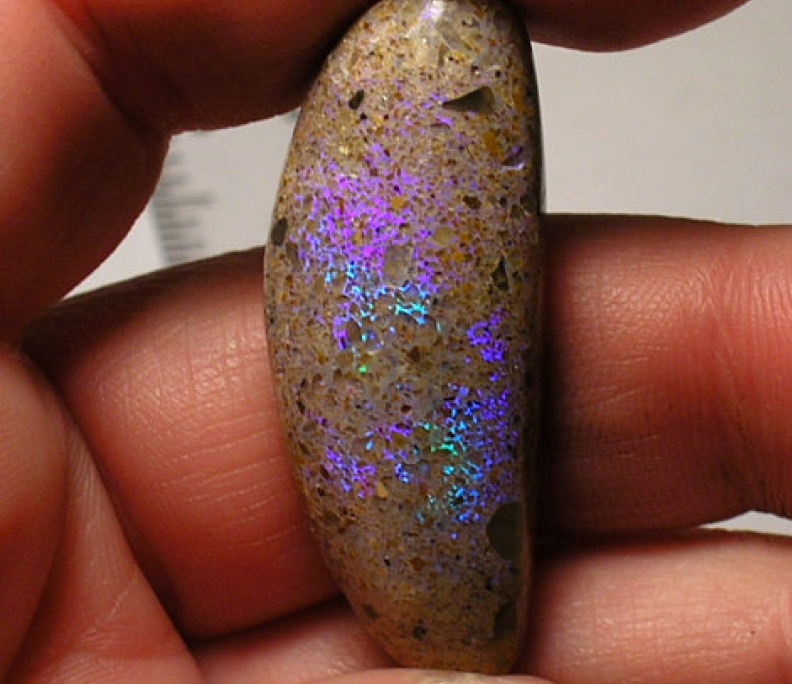Leesville Is The Home Of The State’s Rarest Gem
By Brad Goins
The Louisiana Opal, also known as the Louisiana Sand Opal, was briefly mined in the Catahoula Formation, which is located near Leesville.
Louisiana Opal is a form of sandstone in which grains of sand are held together by clear opal. When it’s exposed to sunlight, this mixture of materials gives off a distinctive play of colors that makes Louisiana Opal look quite intriguing. The darker the original opal, the more easy it is to observe the play of light.
The material is strong enough that it can easily be polished with visually impressive results.
Louisiana Opal has never been mined in anything other than small amounts. Most of the mining went on in the late 1980s and early 1990s. Today, Louisiana Opal is hard to find.
Interested parties will be able to see, and perhaps buy, Louisiana Opal at the DeRidder Rock and Gem Show, which will be held Dec. 9-10 in Leesville at 276 H.M. Stevens Blvd. in the West Louisiana Forestry Fair Grounds. (The show is held under the auspices of the DeRidder Gem and Mineral Society. The group has a Facebook page that includes information about group meetings.)
Technicians who are trained in working with Louisiana Opal will be on hand at the show.
A special focus in this year’s show will be amber, which is made of fossilized tree resin. Ancient beliefs about the material were that it was the sun in solid form or tears of the gods that had fallen onto earth. Jewelry with amber was often given to young brides in the belief that amber offered protection from a variety of potential dangers.
Items for sale at the show will include gems, minerals, fossils, jewelry and additional materials.
Louisiana ‘Palm Wood’
A material that’s much easier to find in the Catahoula Formation than the Louisiana Opal is what’s popularly known as “Louisiana Palm Wood.”
Palm wood developed from a type of fossil known as “Palmoxylon.”
The plants that were the origins of this fossil are not identical to the palm trees we see in our area today. At the time these fossils began to develop, they started with a palm-like plant whose trunk was made of “parenchyma.”
Parenchyma wasn’t a true wood; rather, it was a fibrous material that ran around the tubes in the plant’s vascular structure. These tubes transported water, nutrients and so forth to the plant. (The remnants of these vascular tubes form the small lines that can be seen running through pieces of “Palm Wood.” Cross-sections of the tubes appear as dots in the material.)
When these palm-like plants died, they quickly deteriorated and soon wound up under water. At that point, the fibrous material in the original plant was quickly replaced by silica, which was in liquid form when it replaced the fibers, but then soon hardened. The result was not petrified wood, but, rather, petrified palm.
When the quality of this petrified palm is high, it can be cut, polished and designed.
As was noted, this material is much more common than the Louisiana Opal. And it doesn’t rely on sunlight for its color. Petrified Louisiana palm comes in a broad range of colors, including white, honey, brown, red, orange and pink.
On occasion, sections of petrified Louisiana palm that are mixed with opal have been found. But the effect is not a common one.

















Comments are closed.